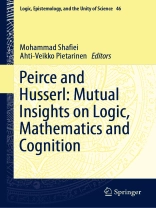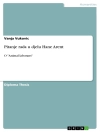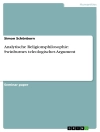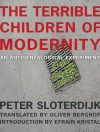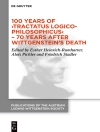This volume aims to provide the elements for a systematic exploration of certain fundamental notions of Peirce and Husserl in respect with foundations of science by means of drawing a parallelism between their works. Tackling a largely understudied comparison between these two contemporary philosophers, the authors highlight the significant similarities in some of their fundamental ideas.
This volume consists of eleven chapters under four parts. The first part concerns methodologies and main principles of the two philosophers. An introductory chapter outlines central historical and systematical themes arising out of the recent scholarship on Peirce and Husserl. The second part is on logic, its Chapters dedicated to the topics from Peirce’s Existential Graphs and the philosophy of notation to Husserl’s notions of pure logic and transcendental logic. The third part includes contributions on philosophy of mathematics. Chapters in the final part deal with the theory of cognition, consciousness and intentionality. The closing chapter provides an extended glossary of central terms of Peirce’s theory of phaneroscopy, explaining them from the viewpoint of the theory of cognition.
Tabla de materias
Chapter 1. Preface.- Chapter 2. Logical Construction And Phenomenological Reduction: Towards A Dialogical Reconstruction of Experience with Special Reference to Peircean And Husserlian Methods (Kuno Lorenz).- Chapter 3. On Logico-phaneroscopical Analysis (Ahti-Veikoo Piaterinen).- Chapter 4. Philosophy of Notation in the 19th century: Peirce, Husserl, and all the Others on Inclusion and Assertion (Francesco Bellucci).- Chapter 5. Symbolic Knowledge in Husserlian Pure Logic (Manuel Gustavo Isaac).- Chapter 6. Peirce’s Existential Graphs as a Contribution to Transcendental Logic (Mohammad Shafiei).- Chapter 7. Husserl and Peirce and the Goals of Mathematics (Mirja Hartimo).- Chapter 8. A Receding Parallelism: Husserl and Pierce from the Perspective of Logic of Probability (Carlos Lobo).- Chapter 9. On Peirce and Husserl on Intentionality (Jiang Yi).- Chapter 10. On the Arising of the I in Peirce and Husserl (Susi Ferrarello).
Sobre el autor
Mohammad Shafiei wrote his Ph D dissertation on Husserl and philosophy of logic under the direction of Mark van Atten and Shahid Rahman. He obtained his Ph D in 2017 from the University of Paris. He is currently a postdoctoral researcher at Shahid Beheshti University, Iran, working on a project on transcendental logic in Husserl and Kant. His research interests include transcendental phenomenology, philosophical logic, theories of meaning and monadology.
Ahti-Veikko Pietarinen’s work is a landmark in Peirce-scholarship since his book Signs of Logic Peircean Themes on the Philosophy of Language, Games, and Communication published by Synthese Library in 2006. He is a philosopher of science, logic, language and human thought. He moved to Astana from Helsinki, Finland and Tallinn, Estonia, where he was professor of philosophy and professor of semiotics for a number of years. He has also had visiting positions at universities in China and Korea. His research interests span from scientific method to human mind and their histories.
